-
 Bitcoin
Bitcoin $87,356.7866
2.55% -
 Ethereum
Ethereum $1,638.7142
1.49% -
 Tether USDt
Tether USDt $1.0000
0.00% -
 XRP
XRP $2.1170
1.59% -
 BNB
BNB $603.9416
1.60% -
 Solana
Solana $140.7449
-0.10% -
 USDC
USDC $1.0000
0.01% -
 Dogecoin
Dogecoin $0.1612
1.47% -
 TRON
TRON $0.2446
0.70% -
 Cardano
Cardano $0.6403
1.48% -
 Chainlink
Chainlink $13.5386
3.52% -
 UNUS SED LEO
UNUS SED LEO $9.4122
0.71% -
 Avalanche
Avalanche $19.9770
0.38% -
 Stellar
Stellar $0.2522
2.41% -
 Toncoin
Toncoin $3.0278
0.79% -
 Shiba Inu
Shiba Inu $0.0...01274
3.15% -
 Sui
Sui $2.2177
2.58% -
 Hedera
Hedera $0.1707
2.77% -
 Bitcoin Cash
Bitcoin Cash $338.7540
-0.36% -
 Polkadot
Polkadot $3.9033
-0.91% -
 Hyperliquid
Hyperliquid $18.1086
-1.54% -
 Litecoin
Litecoin $78.6965
2.64% -
 Bitget Token
Bitget Token $4.5466
-0.88% -
 Dai
Dai $0.9999
0.00% -
 Ethena USDe
Ethena USDe $0.9993
0.02% -
 Pi
Pi $0.6368
-2.12% -
 Monero
Monero $215.6237
-0.53% -
 Uniswap
Uniswap $5.4295
1.63% -
 Pepe
Pepe $0.0...07859
4.81% -
 Aptos
Aptos $5.1258
4.53%
How do NFT Oracles provide external data for NFTs?
NFT oracles bridge the blockchain and real world, securely fetching and verifying off-chain data (via APIs, decentralized networks, or hybrids) for NFTs, enhancing functionality but demanding careful security and reliability considerations.
Mar 06, 2025 at 09:48 am

Key Points:
- NFT Oracles bridge the gap between the blockchain's isolated environment and the real world, providing verifiable off-chain data to NFTs.
- Several methods exist for feeding external data into NFTs via oracles, including APIs, decentralized data networks, and hybrid approaches.
- Security and reliability are paramount considerations when choosing an oracle solution for NFTs, as compromised data can severely impact NFT functionality and value.
- The specific method used depends on the type of data required, the desired level of decentralization, and cost considerations.
How do NFT Oracles provide external data for NFTs?
Non-Fungible Tokens (NFTs) live on the blockchain, a decentralized and immutable ledger. However, the blockchain itself doesn't directly interact with the real world. This is where NFT oracles come in. They act as trusted intermediaries, securely fetching and verifying data from off-chain sources and feeding it onto the blockchain, making that data accessible to NFTs. This allows NFTs to react to real-world events, enhancing their functionality and utility.
One common method is using APIs. An NFT smart contract can be programmed to query an external API (Application Programming Interface). This API could provide information like the current price of a commodity, the weather in a specific location, or the result of a sporting event. The oracle then verifies the data received from the API and submits it to the blockchain, making it available to the NFT. The reliability of this method hinges on the trustworthiness of the API provider.
Decentralized oracle networks offer a more robust solution. Instead of relying on a single entity, these networks use multiple independent data sources and validation nodes. This distributed approach enhances security and resilience against manipulation or censorship. The data is aggregated and verified across the network before being relayed to the NFT's smart contract. While more secure, decentralized oracles can be more complex and expensive to implement.
Hybrid approaches combine aspects of both centralized and decentralized oracles. This might involve using a centralized API for initial data retrieval but then using a decentralized network to verify the data's authenticity. This offers a balance between efficiency and security. The specific combination depends on the risk tolerance and technical requirements of the NFT project.
The type of data an oracle provides is incredibly diverse. It could be anything from verifiable proof of ownership for physical assets linked to an NFT to real-time game scores influencing an NFT's attributes. The possibilities are virtually limitless, only constrained by the creativity of developers and the capabilities of the oracle network. This opens up exciting possibilities for creating dynamic and interactive NFTs.
The security of the oracle is crucial. A compromised oracle could provide false data, leading to errors in NFT functionality or even fraudulent activities. Therefore, careful selection and rigorous auditing of the oracle system are essential. The reputation and track record of the oracle provider should be thoroughly investigated before integrating it into an NFT project. The use of multiple, independent oracles for cross-verification is a common security measure.
Data integrity is also paramount. The oracle must ensure that the data it provides is accurate and hasn't been tampered with. Various cryptographic techniques are used to ensure the data's integrity during transmission and verification. Blockchain's inherent immutability ensures that once the data is recorded on the chain, it cannot be altered.
The cost of using an oracle network can vary considerably depending on the complexity of the data retrieval and verification process, as well as the scale of the operation. Decentralized oracles tend to be more expensive than centralized ones due to the higher computational and operational costs. Developers need to carefully weigh the cost against the benefits of enhanced security and decentralization.
Consider the potential for delays. Retrieving and verifying data from external sources inevitably introduces some latency. This needs to be considered when designing NFT functionality that relies on real-time data updates. Developers should design their smart contracts to accommodate potential delays and avoid creating situations where delayed data could cause critical errors.
Frequently Asked Questions:
Q: What are the risks associated with using NFT oracles?
A: The primary risks include oracle manipulation (providing false data), single points of failure (if relying on a centralized oracle), and data latency (delays in data updates). Choosing a reputable and secure oracle provider and implementing robust security measures are crucial to mitigate these risks.
Q: How do NFT oracles ensure data security?
A: Security measures include cryptographic hashing, multiple data sources for verification, decentralized networks to prevent single points of failure, and rigorous auditing of the oracle's code and processes.
Q: What types of data can NFT oracles provide?
A: The range is vast, including real-world events (sports scores, weather data), financial data (prices of assets), verifiable proof of ownership for physical assets, and any other data that can be accessed via an API or other data sources.
Q: Are all NFT oracles decentralized?
A: No. Some oracles are centralized, relying on a single entity for data provision, while others are decentralized, distributing the task across multiple independent nodes for enhanced security and resilience. Hybrid approaches also exist.
Q: How does the cost of using an NFT oracle vary?
A: Costs depend on factors such as the complexity of data retrieval and verification, the scale of operation, and whether a centralized or decentralized oracle is used. Decentralized oracles generally incur higher costs.
Q: What is the role of smart contracts in NFT oracle integration?
A: Smart contracts act as the interface between the NFT and the oracle. They define the logic for requesting data from the oracle, verifying its authenticity, and updating the NFT's state based on the received data.
Disclaimer:info@kdj.com
The information provided is not trading advice. kdj.com does not assume any responsibility for any investments made based on the information provided in this article. Cryptocurrencies are highly volatile and it is highly recommended that you invest with caution after thorough research!
If you believe that the content used on this website infringes your copyright, please contact us immediately (info@kdj.com) and we will delete it promptly.
- The Solana network briefly surpassed Ethereum in total staked value, sparking debate over whether it is actually bullish or bearish.
- 2025-04-21 12:45:13
- Filecoin and Algorand Ground Blockchain in Reality, Qubetics Skyrockets As Top Cryptos to Watch
- 2025-04-21 12:45:13
- Bitcoin reclaims the $87,000 level, while XRP Flashes Bearish Signals and Dogecoin Celebrates “Dogeday”
- 2025-04-21 12:40:13
- Pi Network (PI) Price Briefly Spikes 4% After Releasing Long-Awaited Mainnet Migration Roadmap
- 2025-04-21 12:40:13
- Top Crypto Coins 2025: Web3 ai, Tron, Dogecoin & Kaspa
- 2025-04-21 12:35:13
- Ethereum's Make-or-Break Moment: Can It Regain Its Edge?
- 2025-04-21 12:35:13
Related knowledge

How to display and trade NFTs from NFT airdrops?
Apr 18,2025 at 04:42am
How to Display and Trade NFTs from NFT Airdrops? NFT airdrops have become a popular way for projects to distribute their tokens and engage with their community. If you've received NFTs through an airdrop, you might be wondering how to display and trade them. This article will guide you through the process step-by-step, ensuring you can showcase your NFT...
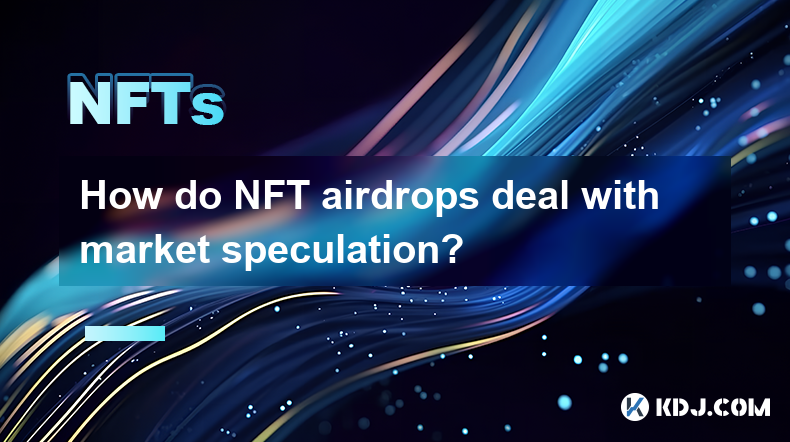
How do NFT airdrops deal with market speculation?
Apr 20,2025 at 10:28pm
NFT airdrops have become a significant phenomenon in the cryptocurrency space, often used as a marketing tool to distribute tokens or digital assets to a wide audience. However, they also introduce elements of market speculation that can impact the value and perception of NFTs. This article explores how NFT airdrops deal with market speculation, delving...
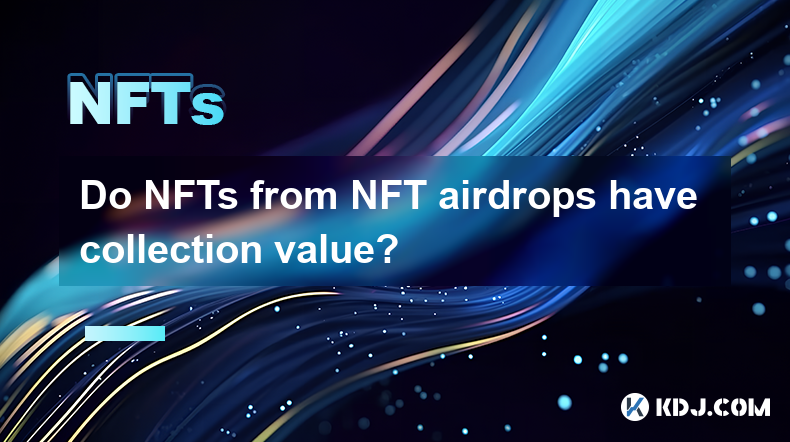
Do NFTs from NFT airdrops have collection value?
Apr 18,2025 at 11:49pm
NFTs, or non-fungible tokens, have become a significant part of the cryptocurrency ecosystem, and NFT airdrops are one way for projects to distribute these digital assets to their community. A common question that arises is whether NFTs received from airdrops have any collection value. To answer this question, we need to delve into various aspects of NF...
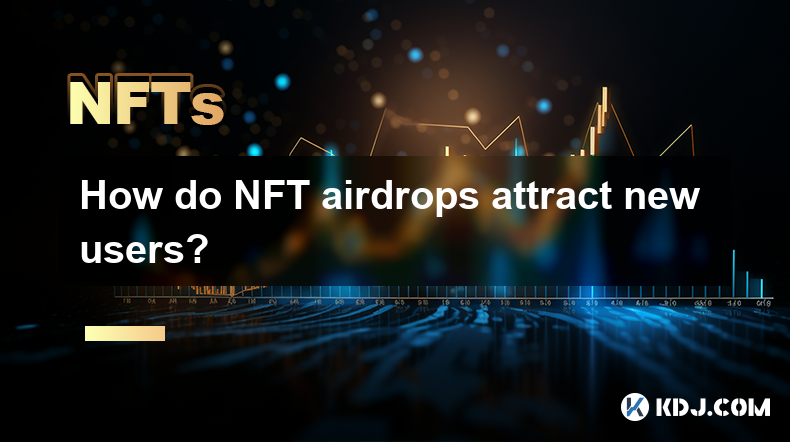
How do NFT airdrops attract new users?
Apr 21,2025 at 07:21am
NFT airdrops have become a popular strategy within the cryptocurrency community to attract new users and engage existing ones. By distributing free NFTs to a targeted audience, projects can create buzz, increase visibility, and foster a sense of community. This method leverages the allure of free digital assets to draw in participants who might not have...
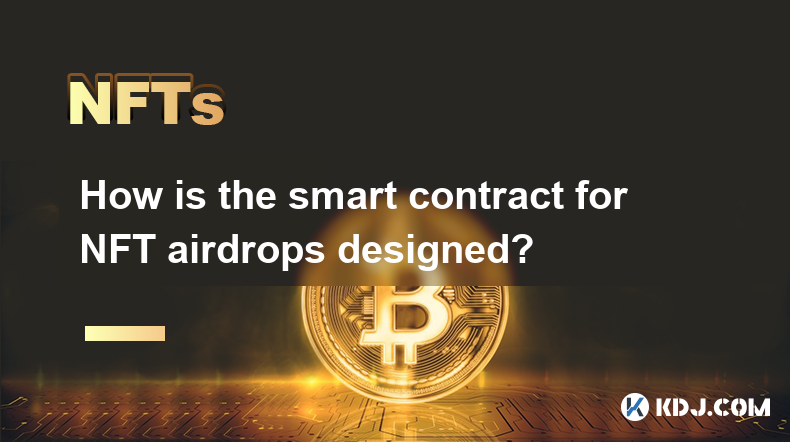
How is the smart contract for NFT airdrops designed?
Apr 18,2025 at 03:10am
The design of a smart contract for NFT airdrops is a complex process that requires careful consideration of various factors to ensure the airdrop is executed smoothly and securely. This article will delve into the intricacies of how such a smart contract is designed, focusing on key components, security measures, and the implementation process. Key Comp...
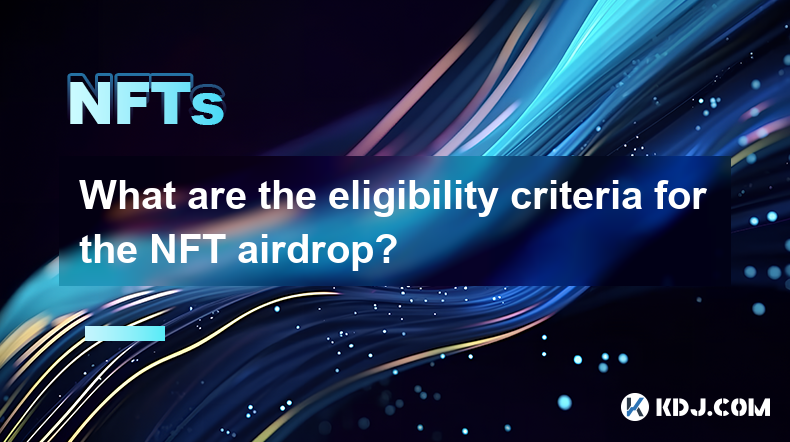
What are the eligibility criteria for the NFT airdrop?
Apr 17,2025 at 04:56pm
Understanding NFT AirdropsNFT airdrops are a popular method used by blockchain projects to distribute non-fungible tokens (NFTs) to their community members. These airdrops can serve various purposes, such as rewarding loyal users, promoting new projects, or increasing the visibility of existing ones. To participate in an NFT airdrop, individuals must me...

How to display and trade NFTs from NFT airdrops?
Apr 18,2025 at 04:42am
How to Display and Trade NFTs from NFT Airdrops? NFT airdrops have become a popular way for projects to distribute their tokens and engage with their community. If you've received NFTs through an airdrop, you might be wondering how to display and trade them. This article will guide you through the process step-by-step, ensuring you can showcase your NFT...

How do NFT airdrops deal with market speculation?
Apr 20,2025 at 10:28pm
NFT airdrops have become a significant phenomenon in the cryptocurrency space, often used as a marketing tool to distribute tokens or digital assets to a wide audience. However, they also introduce elements of market speculation that can impact the value and perception of NFTs. This article explores how NFT airdrops deal with market speculation, delving...

Do NFTs from NFT airdrops have collection value?
Apr 18,2025 at 11:49pm
NFTs, or non-fungible tokens, have become a significant part of the cryptocurrency ecosystem, and NFT airdrops are one way for projects to distribute these digital assets to their community. A common question that arises is whether NFTs received from airdrops have any collection value. To answer this question, we need to delve into various aspects of NF...

How do NFT airdrops attract new users?
Apr 21,2025 at 07:21am
NFT airdrops have become a popular strategy within the cryptocurrency community to attract new users and engage existing ones. By distributing free NFTs to a targeted audience, projects can create buzz, increase visibility, and foster a sense of community. This method leverages the allure of free digital assets to draw in participants who might not have...

How is the smart contract for NFT airdrops designed?
Apr 18,2025 at 03:10am
The design of a smart contract for NFT airdrops is a complex process that requires careful consideration of various factors to ensure the airdrop is executed smoothly and securely. This article will delve into the intricacies of how such a smart contract is designed, focusing on key components, security measures, and the implementation process. Key Comp...

What are the eligibility criteria for the NFT airdrop?
Apr 17,2025 at 04:56pm
Understanding NFT AirdropsNFT airdrops are a popular method used by blockchain projects to distribute non-fungible tokens (NFTs) to their community members. These airdrops can serve various purposes, such as rewarding loyal users, promoting new projects, or increasing the visibility of existing ones. To participate in an NFT airdrop, individuals must me...
See all articles






















































































